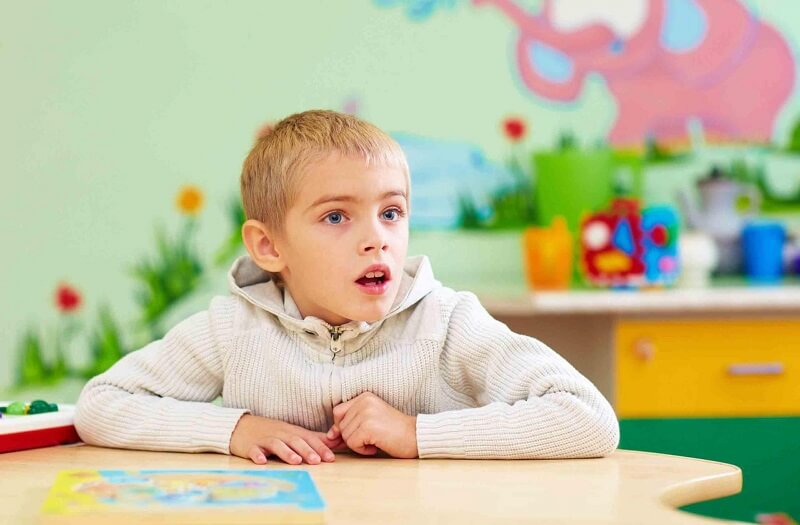Autism and short-term memory issues
What is the neural basis for memory problems in Autism
Explanations behind Autism and short term memory issues
Specific causes for Autism range problems have not yet been fully explored, despite the fact that they are often related to hereditary variables.
Assuming there is one child in the family with a mental imbalance, the chance of having another child with a mental imbalance increases between 50 and 100 percent. Related inherited factors such as X-sensitive conditions and Down syndrome are associated with problems in the Autism range and short-term memory. Pregnancy infections, such as rubella or cytomegalovirus, can also play a role.
Some Children have mental problems in the structure of the brain and the way it works could be completely different from others.
Signs
Side effects in patients with Autism and its problems are associated with two reasons.
- Social communication and interpersonal communication
- Restricted and dull standards of conduct
What is the difference between the brain of a child with autism and the brain of a non-autistic child?
Mental imbalance is a problem that is influencing an ever-increasing number of individuals. This problem is a neurological disease because it significantly affects psychological, social, and close family events. It also has a significant impact on language development and the practical use of discourse.
Mental imbalance is an imaginary problem that shows that it can become serious with mild capacities and also affect the child’s language capacity.
In the following, you will find out how children with these problems differ from normal Children.

The relationship between Autism and the brain
At various levels of mental imbalance, and confusion, approximately 30 to 40 percent of people are diagnosed with mild mental imbalance.
About 60% of these people are determined to have an underactive mental imbalance (moderate to severe Autism). Most people with Autism can express themselves verbally, although these correspondences may be very limited, and about 25% of them never reach a discourse or a proper discourse and language. People with problems with the mental imbalance range work with fewer capacities or abilities that are connected to circuits and lower levels of the brain. These less complex capacities include basic considerations, simple basic enhancements, tactile insight, basic memory, formal language (counting lexical and syntactic components), learning rules, and visual management.

The white matter of the brain
Children with short-term memory issues and Autism hate the gray matter in their brains, which is responsible for mental capacity. It should be noted, however, that these Children do not approve of the vast majority of their mental structures, including the white matter of the mind. They also deal with a number of issues. The “white part of the mind” is the lower part of the cortex, or “dim part of the brain,” which contains the axons that communicate with different parts of the mind, and because these axons have white coatings, they are all white. X-ray concentrates in people with imbalance and short-term memory have shown discrepancies in the volume and size of white matter in the brain.
In one study, people with Autism were exposed to white matter in their brains and often experienced problems dealing with facial recognition, language, and working conditions. This study shows that this unusual growth of white matter in the brain has become normal in the long run due to behavioral improvement in children with a mental imbalance, which is more medically normal in introverts.

In another study of 69 medically autistic children, 55 hyperactive children, and 50 normal-grown children, brain filters showed that people with Autism and short-term memory had abnormalities in the design of white matter neurons in the mind. Both are related to mental imbalance, and hyperactivity is more severe than side effects.
These irregularities in the corpus callosum (an arcuate mass of white matter in the brain that lies somewhere in the longitudinal depression and consists of intersecting strands that connect the equatorial sides of the mind and is the largest structure of white matter in the brain).
Given the consequences of this research and hereditary examinations, mental imbalance and hyperactivity have natural roots, and perhaps one day we can work on the analytical reason for these two problems.

Because these Children experience issues that strongly discern important data as important, they also reduce non-ambiguity to zero. According to research, perceptual changes may occur in people with mental imbalance.
So one child may observe variety and be attracted to brightly colored objects, while another may be attracted to the surface of items.
Dear Parents, to further develop the neonatal brain capacity and short-term memory we suggest that you perform exercises and activities to further develop the mental capacity of infants from 0 to 6 months.
These activities contain real and practical answers to further develop the mental capacity and momentary memory of young people.
Brain and language development in children with mental health problems
Mental imbalance, like any developmental problem, affects the capacity and development of the child’s brain and hinders language development. Because it disrupts mental health and changes the way the brain responds to climatic promotions, in normal developmental interactions, the mind has certain capacities, for example, distinguishing metaphors or examples that the brain adjusts for language learning.
For example, in a child with developmental language problems, the range of mental imbalance is disturbed. Because the child grows uniquely compared to other people, the effects are obvious even before the analysis.

As a result, in Autism, two elements affect a child’s ability to learn and use language:
- Contrasts in the primary mind’s events and their portrayal
- The cerebrum answers organic contributions with natural imperatives.
In the early stages of recovery, a child with a developed mind can distinguish instructive discourse from non-verbal speech by recognizing words during the discourse. and understand verbal communication. However, this is very difficult for a child with Autism and short-term memory problems. As a parent, you can take this difficult path with children with this problem and make it less difficult.
 Education & Cognition
Education & Cognition 